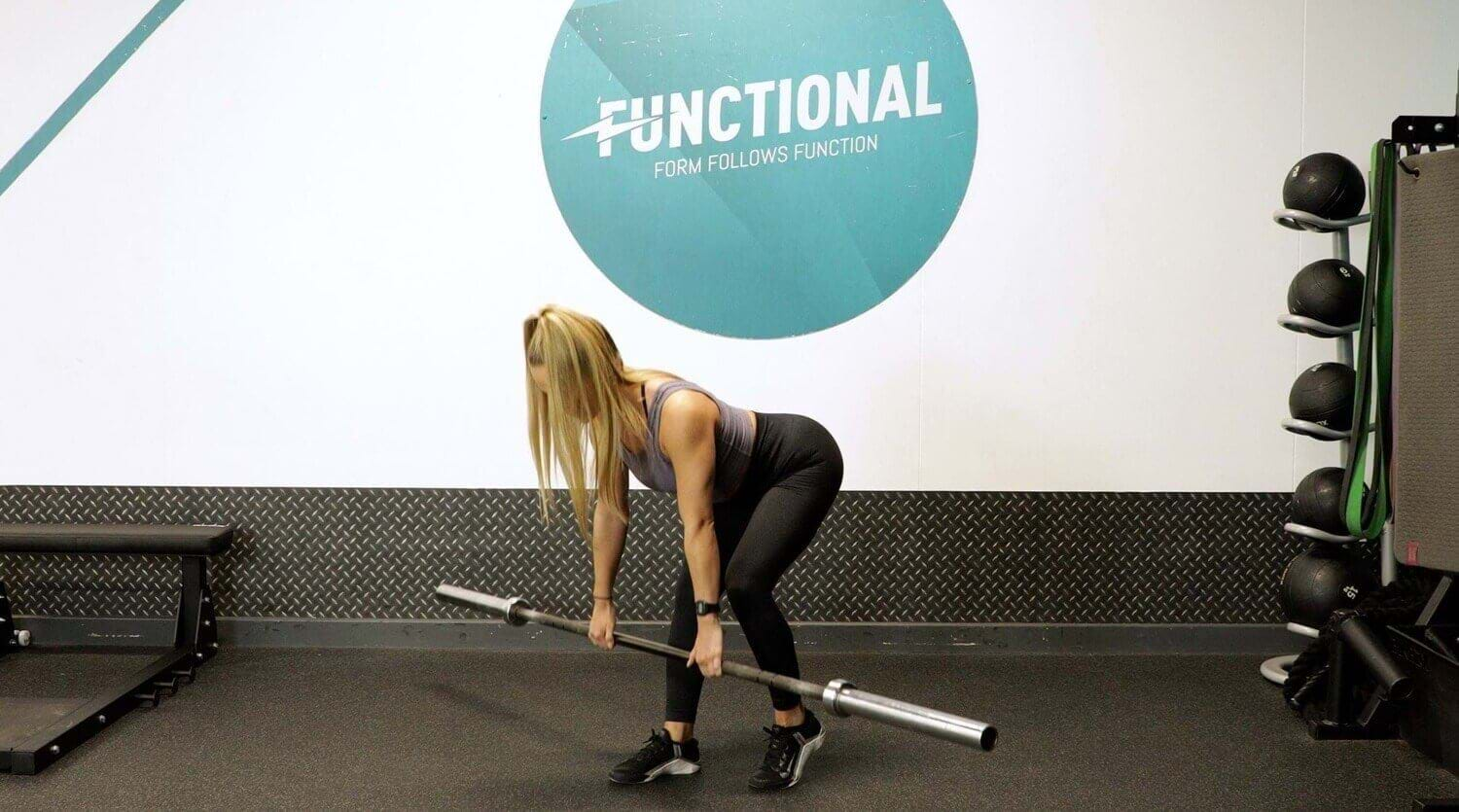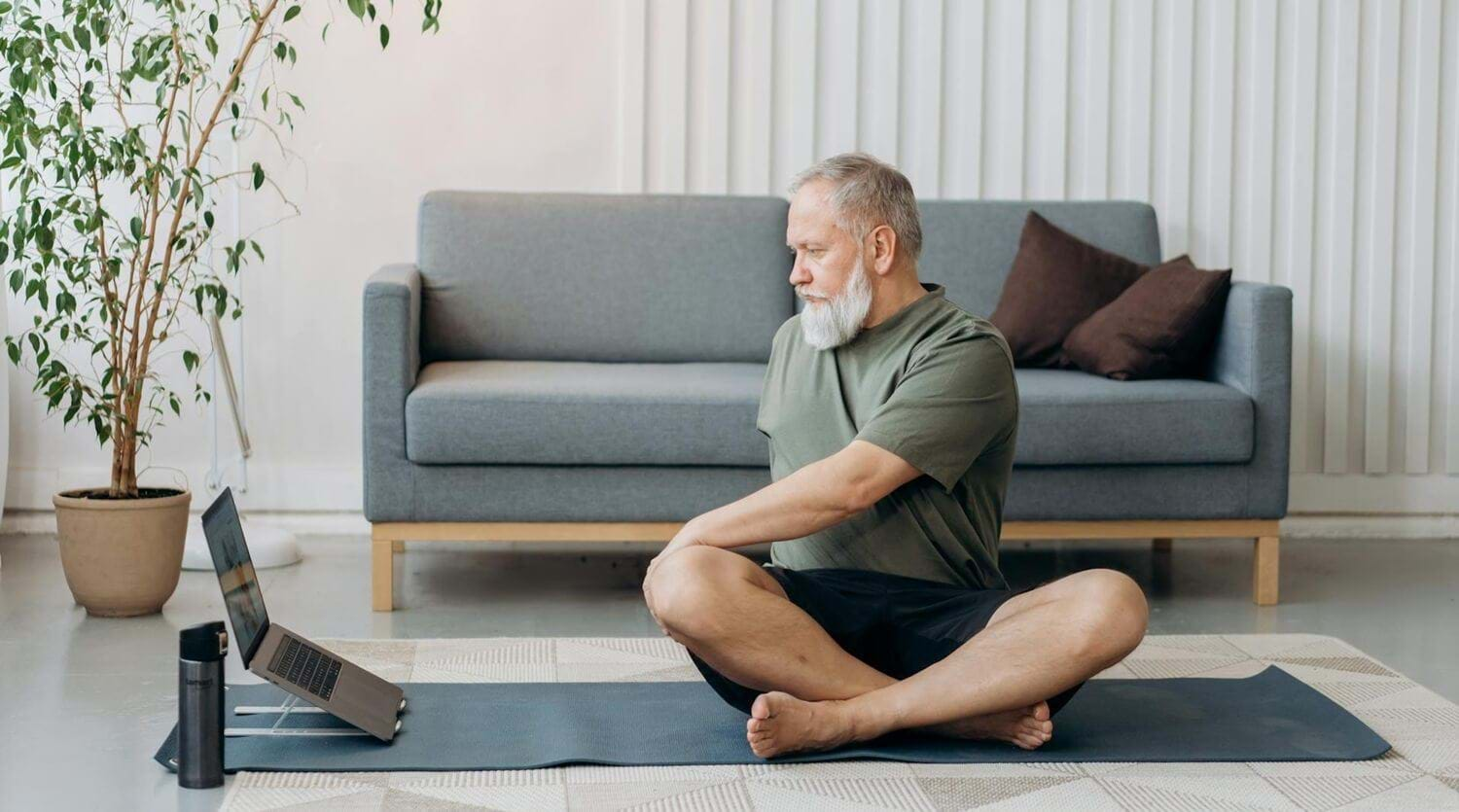Strength Training For Hypermobility

What Is Hypermobility | Symptoms | Why Train | Challenges | Safety Tips | Best Exercises | Workout Plan
All the joints in our bodies have a clinically normal range of motion. Some people have joints which have a large range of movement, known as hypermobility.
Hypermobility can affect people in different ways, but in almost all instances exercise, when done correctly, can help to improve many of the symptoms experienced due to hypermobility. But, exercising with hypermobility can present some challenges that make it difficult to get started.
Learn why exercising with hypermobility is so beneficial, how to exercise safely and effectively when you have hypermobility, and more below.
What Is Hypermobility?
Hypermobility refers to a joint that bends beyond the normal range of movement, known as hyperextension. Someone can have a single hypermobile joint, or multiple hypermobile joints. This hypermobility is typically caused by differences in the collagen that makes up the connective tissue in the body, causing the ligaments in the joints to be weaker and more elastic.
Hypermobility can be caused by connective tissue disorders caused by genetic connective tissue disorders such as Ehlers Danlos Syndrome and Margan Syndrome, injury or intensive and prolonged training, and conditions such as Down’s Syndrome.
Many people with hypermobility do not have negative symptoms and may not even be aware of their hypermobility, especially when they are younger. For others, hypermobility can cause symptoms ranging from mild to debilitating. Without a diagnosis of one of the disorders associated with hypermobility, someone who experiences problems and symptoms due to their hypermobility may be diagnosed with joint hypermobility syndrome.
What Are The Symptoms Of Hypermobility?
The most obvious symptom of hypermobility is a joint’s ability to move beyond a normal range, which is typically assessed using The Beighton Score. There are other ways hypermobile joints can impact your day to day including:
Unstable and injury prone joints
Hypermobile joints have more range of movement and are weaker, which makes them much less stable. People with hypermobility may be more likely to experience sprains, strains, tendonitis, joint dislocations and subluxations (partial dislocations).
Clumsiness
Our brains use proprioceptors in ligaments and tendons in the body for spatial awareness and movement. In people with hypermobility, these proprioceptors are less accurate due to their increased elasticity. People with hypermobility in multiple joints tend to be clumsy and accident prone as a result.
Low muscle tone and tight muscles
People with hypermobility may appear more flexible than normal, but this movement comes from the joints rather than the muscles. They often have low muscle tone and tight, weak muscles caused by the body stiffening up to compensate for loose joints and injuries. This can worsen joint instability and increase the risk of muscle and joint injuries.
Chronic fatigue
People with hypermobility may experience chronic fatigue as a direct result of the hypermobility as the body must work harder to keep stable at all times. People with hypermobility syndromes are also more likely to experience other conditions, such as PoTS (postural tachycardia syndrome) which worsen fatigue.
Chronic pain
People with hypermobility may experience persistent joint and muscle pain for several reasons, including muscle fatigue from overworking to combat joint instability, increased risk of injury and accidents, and overextending the ligaments in the joints.
Problems with digestion, autonomic functions, and more
People with hypermobility often have issues with collagen in all of their connective tissues, not just the joints. Everything from the digestive system to the blood vessels is made up of connective tissue, which means people with hypermobility syndromes may experience issues and abnormalities in all areas. Hypermobility has also been linked to conditions such as autism, ADHD, and mast cell activation disorders.
Benefits Of Strength Training For Hypermobility
Hypermobility strength training can have an incredible impact on your quality of life, particularly when it comes to pain and fatigue:
Stronger muscles are better equipped to stabilise the joints and protect them against hyperextending, reducing wear and tear on the ligaments as well as the risk of injury.
Strength training also builds muscular endurance, meaning you'll get less fatigued from having to maintain stable joints.
Training can improve proprioception, making accidents less likely to happen.
Even if you don't currently have symptoms like pain and fatigue, these can worsen over time. Constantly hyperextending the joints can damage these ligaments over time, while low muscle tone is associated with increased risk of falls and even higher mortality rates as you get older. Training helps to protect against these issues as you age, in addition to the usual health benefits of resistance training such as better bone density, protection against chronic diseases, and improved wellbeing.
Hypermobility And Strength Training: The Challenges
While strength training with hypermobility is hugely beneficial, it comes with challenges:
Increased risk of injury
The joint instability and poor proprioception caused by hypermobility can increase the risk of injury when training as it impacts your ability to keep to safe movement patterns and range of motions.
Poor technique
Issues with proprioception, weak muscles, and joint range can make it harder for people with hypermobility to engage the correct muscles and train with good form. Poor technique makes exercises less efficient and can increase the likelihood of injuries.
Fatigue
The stabilising muscles have to work harder to keep hypermobile joints stable so people with hypermobility typically get fatigued quicker. This can make it harder to complete a work out, or alternatively result in poor form or relying on hyperextension of the joints to achieve stability, both which reduce the effectiveness of an exercise and can cause damage and pain.
How To Train With Hypermobility Safely
Despite the above challenges, safe hypermobile strength training is possible. Here are some ways to approach strength training when you have hypermobile joints.
Focus on form.
Good form is important for everyone, and even more so for people with joint hypermobility. Make sure you understand what muscles you should be engaging and how an exercise should be performed and then focus on keeping this technique throughout an exercise.
If possible, work with a PT or physio to ensure you are using the right technique when exercising. If this isn’t an option, you can use a mirror or film yourself to see if your form looks right. Start with bodyweight movements and only add resistance once you are confident you can do it correctly and with control.
Build balance and stability.
Before jumping into heavy strength focused exercises, it’s important to strengthen the stabilising muscles that will help to protect your joints. Bodyweight exercises that challenge balance and coordination can help to build a stronger foundation so that when you are less likely to injure or fatigue when progressing your workouts.
Use resistance bands and fixed resistance machines.
Resistance bands can be used to make exercises harder without putting excessive pressure on the joints. Using resistance bands can also activate the stabilising muscles more.
Using fixed resistance machines is another great option. These gym machines use a fixed movement path which makes engaging the correct muscles and using good technique easier. Fixed resistance machines use the stabilising muscles less than free weights or resistance bands, but when used alongside other exercises can be a great way to strengthen the muscles safely.
Avoid hyperextension.
People with hypermobility may find themselves using extreme range of motion and hyperextending their joints without realising. It’s important to monitor your form and avoid doing so to protect the joints. Stop short of locking out the elbows and knees when exercising and keep below your max range of motion to prevent hyperextension. While it’s fine to feel a stretch in the muscles during exercise, you should never feel stretching or pain across the joint.
Use isometric and eccentric exercises.
Isometric and eccentric training are great for building stability and strength in hypermobile joints. Isometric training involves holding an exercise for a period of time, for example wall sits, while eccentric exercises slow down the portion of an exercise where the muscle lengthens, for example taking longer to lower down in a squat.
Start slowly.
Reduce the risk of injury or added fatigue by gradually increasing the volume and intensity of your workouts, and allowing for plenty of rest and recovery. Giving your muscles and joints enough time to adapt to training will make it less likely you experience strains or sprains, and make it easier to stay consistent.
Best Exercises For Hypermobility Strength Training
As you get stronger and improve your joint stability, you can move on to more 'standard' weightlifting exercises like deadlifts and overhead presses. In the beginning however, it's better to prioritise control and stability. Here are some of the best exercises to get you started.
Here are some good strength exercises to get started.
Lunges. Lunges challenge the stabilising muscles in the legs and core while building lower body strength. Start with bodyweight lunges and focus on maintaining good alignment and stability.
Deadbugs. Deadbugs strengthen the core and improve coordination.
Wall sits. Wall sits build lower body muscular endurance and strengthen the quads and muscles which help to stabilise the knees.
Box squats. Box squats remove momentum and put the focus onto strength and control while helping with form, making it a great squat variation for people with hypermobility. Begin with bodyweight and progress to using dumbbells as you get stronger.
Floor chest press. This dumbbell chest press variation reduces the range of movement and puts less stress on the shoulder joints.
Shoulder press machine. Using a resistance machine helps with shoulder alignment and stability during the exercise so you can strengthen the supporting muscles with less chance of poor form or injury.
Isometric hamstring curl. Stronger hamstrings can help to prevent against knee hyperextension. Training this exercise as a hold mimics the body's need to keep the knee in a neutral position for long periods of time.
Glute bridges. The glutes are often weak in people with hypermobility. Glute bridges strengthen these muscles and teach you how to engage them correctly.
Resistance band front raises. These strengthen the rotator cuff and help to keep the shoulders more stable.
Fixed lat pulldown machine. This strengthens the shoulders back and can help with posture, while using a fixed movement path to encourage correct form.
Pilates. Pilates classes and workouts are a great option as they focus on good alignment and control, with exercises which build balance and stability.
Example Hypermobile Strength Training Programme
Monday: full body strength
Lunges - 3 x 6-10 reps per side
Dumbbell floor press - 3 x 8-10 reps
Glute bridges - 3 x 8-12 reps
Fixed lat pulldown machine - 3 x 8-10 reps
Forearm plank - 3 x 20 second holds
Tuesday: cardio
- 15-30 minutes low impact cardio such as swimming, elliptical machine, or cycling
Wednesday: full body strength
Wall sit - 4 x 30 second holds
Hamstring curls - 3 x 8-12 reps
Shoulder press machine - 3 x 8-10 reps
Bird dogs - 3 x 10-12 reps
Wall push ups - 3 x 6-10 reps
Thursday: rest
Friday: cardio
- 15-30 minutes low impact cardio such as swimming, elliptical machine, or cycling
Saturday: Pilates
- Pilates class or workout
Sunday: rest
Summary
Training with hypermobility can help to improve pain and fatigue levels and reduce the risk of injuries and issues associated with hypermobility. To begin with, focus on exercises that balance, coordination, and stability as this will help to manage joint instability. Once you have a good foundation of stability and technique, you can progress onto more strength and hypertrophy focused weightlifting if desired.
Need help with your form or knowing what exercises to do? Why not work with a Personal Trainer at your nearest gym.


